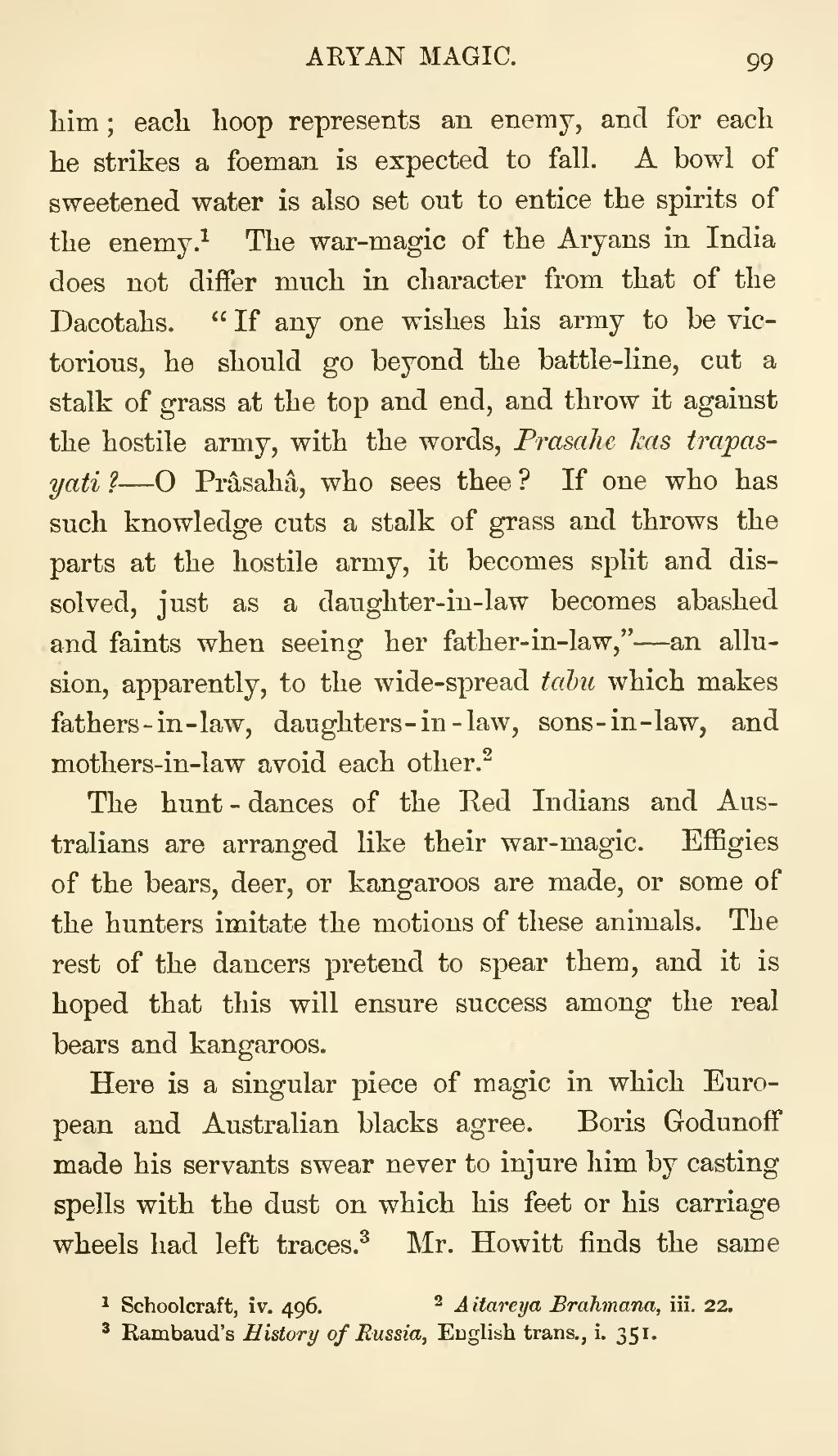him; each hoop represents an enemy, and for each he strikes a foeman is expected to fall. A bowl of sweetened water is also set out to entice the spirits of the enemy.[1] The war-magic of the Aryans in India does not differ much in character from that of the Dacotahs. "If any one wishes his army to be victorious, he should go beyond the battle-line, cut a stalk of grass at the top and end, and throw it against the hostile army, with the words, Prasahe kas trapasyati?—O Prâsahâ, who sees thee? If one who has such knowledge cuts a stalk of grass and throws the parts at the hostile army, it becomes split and dissolved, just as a daughter-in-law becomes abashed and faints when seeing her father-in-law,"—an allusion, apparently, to the wide-spread tabu which makes fathers-in-law, daughters-in-law, sons-in-law, and mothers-in-law avoid each other.[2]
The hunt-dances of the Red Indians and Australians are arranged like their war-magic. Effigies of the bears, deer, or kangaroos are made, or some of the hunters imitate the motions of these animals. The rest of the dancers pretend to spear them, and it is hoped that this will ensure success among the real bears and kangaroos.
Here is a singular piece of magic in which European and Australian blacks agree. Boris Godunoff made his servants swear never to injure him by casting spells with the dust on which his feet or his carriage wheels had left traces.[3] Mr. Howitt finds the same
- ↑ Schoolcraft, iv. 496.
- ↑ Aitareya Brahmana, iii. 22.
- ↑ Rambaud's History of Russia, English trans., i. 351.
